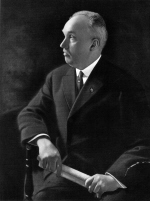Crosby Hall History
 Crosby Laboratory is a multiple use facility under the direction of the Mechanical Engineering Department at the University of Maine. The Laboratory is home to both material and thermal science testing facilities. For over seventy-five years Crosby Laboratory has collaborated with industry at the state and national levels. This has allowed the Laboratory to provide quality research, for our industry partners, and a first rate education to our students.
Crosby Laboratory is a multiple use facility under the direction of the Mechanical Engineering Department at the University of Maine. The Laboratory is home to both material and thermal science testing facilities. For over seventy-five years Crosby Laboratory has collaborated with industry at the state and national levels. This has allowed the Laboratory to provide quality research, for our industry partners, and a first rate education to our students.
Located on the scenic University of Maine campus in Orono, the laboratory was constructed in 1926 with funds donated by Mr. Oliver Crosby, the inventor of the Crosby Clamp. Crosby’s dream was to establish a facility, at his alma mater, where the mechanical engineering arts could thrive. As we enter the 21st century, Crosby’s dream continues to flourish as Crosby Laboratory excels as both an advanced engineering research facility and a facility for providing today’s students with the skills they will need to succeed as tomorrow’s engineers.
About Oliver Crosby
 (1855 – 1922) Crosby was the founder, president and chief engineer of American Hoist and Derrick Company (later known as AmHoist), a manufacturing company that created unique products for lifting and construction tasks. He is the inventor or co-inventor of 36 patents issued
(1855 – 1922) Crosby was the founder, president and chief engineer of American Hoist and Derrick Company (later known as AmHoist), a manufacturing company that created unique products for lifting and construction tasks. He is the inventor or co-inventor of 36 patents issued  between 1887 and 1925, primarily hoisting devises and cable enhancements. His most well-known invention is the wire rope clamp, a device to loop wire cable without losing its strength. It was marketed and sold as the “Crosby Clip” and is still being sold today.
between 1887 and 1925, primarily hoisting devises and cable enhancements. His most well-known invention is the wire rope clamp, a device to loop wire cable without losing its strength. It was marketed and sold as the “Crosby Clip” and is still being sold today.
Crosby invented the first traveling cranes mounted on railcar type wheels. For the railroad industry, he designed the ditcher, a flatcar-mounted crane that could scoop out dirt forming ditches on either side of the track. For the lumber industry, he designed cranes that could move between flatbed cars to safely lift logs on and off rail cars. For the shipping industry, he designed large traveling cranes for harbors around the world. And he designed the boom derrick for the sugar cane industry. Based on his designs, his company manufactured huge cranes for major construction projects, such as the Panama Canal. His company was also a major supplier of cranes, hoists and derricks for American shipyards during World War I and World War II. The company produced some of the largest machines ever manufactured. Perhaps the most famous is the forty-ton traveling crane at the Mare Island Naval Shipyard near San Francisco (home of the Pacific Fleet during World War II). It was recognized as the largest crane in the world for more than 15 years. Crosby also invented the first crawler cranes – cranes on continuous chain treads – the forerunner of today’s modern, huge crawler machines.
During Crosby’s tenure as president, from 1882 until his death in 1922, his company grew to more than 1,000 employees with offices in every major city in the United States. He created a culture and structure for the company to grow to be a Fortune 500 company, one of the nation’s top 500 companies as measured by revenue. Crosby was a leader in the St. Paul business and civic community, focusing on city planning and beautification. Although he never ran for public office, his opinion and advice were widely sought in matters affecting municipal and civic development.
